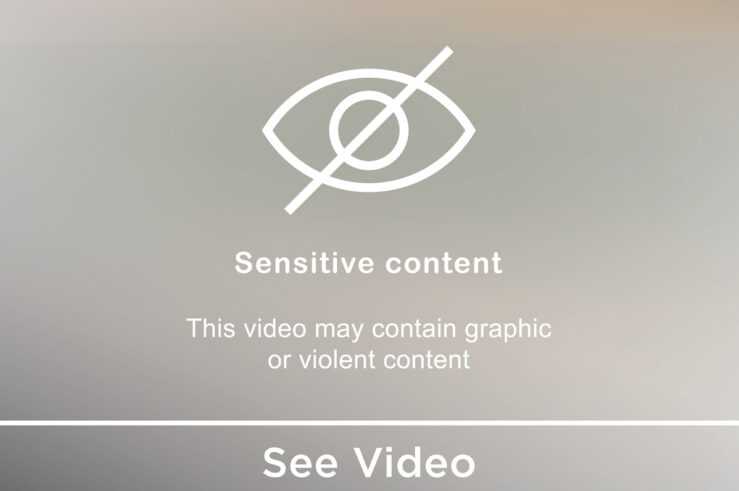This article is a part of the Unfair Methods of Competition Symposium symposium.
Anybody who has spent much time with children knows how squishy a concept “unfairness” can be. One can hear the exchange, “He’s not being fair!” “No, she’s not!,” only so many times before coming to understand that unfairness is largely in the eye of the beholder.
Perhaps it’s unfortunate, then, that Congress chose a century ago to cast the Federal Trade Commission’s authority in terms of preventing “unfair methods of competition.” But that’s what it did, and the question now is whether there is some way to mitigate this “eye of the beholder” problem.
There is.
We know that any business practice that violates the substantive antitrust laws (the Sherman and Clayton Acts) is an unfair method of competition, so we can look to Sherman and Clayton Act precedents to assess the “unfairness” of business practices that those laws reach. But what about the Commission’s so-called “standalone” UMC authority—its power to prevent business practices that seem to impact competition unfairly but are not technically violations of the substantive antitrust laws?
Almost two years ago, Commissioner Josh Wright recognized that if the FTC’s standalone UMC authority is to play a meaningful role in assuring market competition, the Commission should issue guidelines on what constitutes an unfair method of competition. He was right. The Commission, you see, really has only four options with respect to standalone Section 5 claims:
- It could bring standalone actions based on current commissioners’ considered judgments about what constitutes unfairness. Such an approach, though, is really inconsistent with the rule of law. Past commissioners, for example, have gone so far as to suggest that practices causing “resource depletion, energy waste, environmental contamination, worker alienation, [and] the psychological and social consequences of producer-stimulated demands” could be unfair methods of competition. Maybe our current commissioners wouldn’t cast so wide a net, but they’re not always going to be in power. A government of laws and not of men simply can’t mete out state power on the basis of whim.
- It could bring standalone actions based on unfairness principles appearing in Section 5’s “common law.” The problem here is that there is no such common law. As Commissioner Wright has observed and I have previously explained, a common law doesn’t just happen. Development of a common law requires vigorously litigated disputes and reasoned, published opinions that resolve those disputes and serve as precedent. Section 5 “litigation,” such as it is, doesn’t involve any of that.
- First, standalone Section 5 disputes tend not to be vigorously litigated. Because the FTC acts as both prosecutor and judge in such actions, their outcome is nearly a foregone conclusion. When FTC staff win before the administrative law judge, the ALJ’s decision is always affirmed by the full commission; when staff loses with the ALJ, the full Commission always reverses. Couple this stacked deck with the fact that unfairness exists in the eye of the beholder and will therefore change with the composition of the Commission, and we end up with a situation in which accused parties routinely settle. As Commissioner Wright observes, “parties will typically prefer to settle a Section 5 claim rather than go through lengthy and costly litigation in which they are both shooting at a moving target and have the chips stacked against them.”
- The consent decrees that memorialize settlements, then, offer little prospective guidance. They usually don’t include any detailed explanation of why the practice at issue was an unfair method of competition. Even if they did, it wouldn’t matter much; the Commission doesn’t treat its own enforcement decisions as precedent. In light of the realities of Section 5 litigation, there really is no Section 5 common law.
- It could refrain from bringing standalone Section 5 actions and pursue only business practices that violate the substantive antitrust laws. Substantive antitrust violations constitute unfair methods of competition, and the federal courts have established fairly workable principles for determining when business practices violate the Sherman and Clayton Acts. The FTC could therefore avoid the “eye of the beholder” problem by limiting its UMC authority to business conduct that violates the antitrust laws. Such an approach, though, would prevent the FTC from policing conduct that, while not technically an antitrust violation, is anticompetitive and injurious to consumers.
- It could bring standalone Section 5 actions based on articulated guidelines establishing what constitutes an unfair method of competition. This is really the only way to use Section 5 to pursue business practices that are not otherwise antitrust violations, without offending the rule of law.
Now, if the FTC is to take this fourth approach—the only one that both allows for standalone Section 5 actions and honors rule of law commitments—it obviously has to settle on a set of guidelines. Fortunately, it has almost done so!
Since Commissioner Wright called for Section 5 guidelines almost two years ago, much ink has been spilled outlining and critiquing proposed guidelines. Commissioner Wright got the ball rolling by issuing his own proposal along with his call for the adoption of guidelines. Commissioner Ohlhausen soon followed suit, proposing a slightly broader set of principles. Numerous commentators then joined the conversation (a number doing so in a TOTM symposium), and each of the other commissioners has now stated her own views.
A good deal of consensus has emerged. Each commissioner agrees that Section 5 should be used to prosecute only conduct that is actually anticompetitive (as defined by the federal courts). There is also apparent consensus on the view that standalone Section 5 authority should not be used to challenge conduct governed by well-forged liability principles under the Sherman and Clayton Acts. (For example, a practice routinely evaluated under Section 2 of the Sherman Act should not be pursued using standalone Section 5 authority.) The commissioners, and the vast majority of commentators, also agree that there should be some efficiencies screen in prosecution decisions. The remaining disagreement centers on the scope of the efficiencies screen—i.e., how much of an efficiency benefit must a business practice confer in order to be insulated from standalone Section 5 liability?
On that narrow issue—the only legitimate point of dispute remaining among the commissioners—three views have emerged: Commissioner Wright would refrain from prosecuting if the conduct at issue creates any cognizable efficiencies; Commissioner Ohlhausen would do so as long as the efficiencies are not disproportionately outweighed by anticompetitive harms; Chairwoman Ramirez would engage in straightforward balancing (not a “disproportionality” inquiry) and would refrain from prosecution only where efficiencies outweigh anticompetitive harms.
That leaves three potential sets of guidelines. In each, it would be necessary that a behavior subject to any standalone Section 5 action (1) create actual or likely anticompetitive harm, and (2) not be subject to well-forged case law under the traditional antitrust laws (so that pursuing the action might cause the distinction between lawful and unlawful commercial behavior to become blurred). Each of the three sets of guidelines would also include an efficiencies screen—either (3a) the conduct lacks cognizable efficiencies, (3b) the harms created by the conduct are disproportionate to the conduct’s cognizable efficiencies, or (3c) the harms created by the conduct are not outweighed by cognizable efficiencies.
As Commissioner Wright has observed any one of these sets of guidelines would be superior to the status quo. Accordingly, if the commissioners could agree on the acceptability of any of them, they could improve the state of U.S. competition law.
Recognizing as much, Commissioner Wright is wisely calling on the commissioners to vote on the acceptability of each set of guidelines. If any set is deemed acceptable by a majority of commissioners, it should be promulgated as official FTC Guidance. (Presumably, if more than one set commands majority support, the set that most restrains FTC enforcement authority would be the one promulgated as FTC Guidance.)
Of course, individual commissioners might just choose not to vote. That would represent a sad abdication of authority. Given that there isn’t (and under current practice, there can’t be) a common law of Section 5, failure to vote on a set of guidelines would effectively cast a vote for either option 1 stated above (ignore rule of law values) or option 3 (limit Section 5’s potential to enhance consumer welfare). Let’s hope our commissioners don’t relegate us to those options.
The debate has occurred. It’s time to vote.




